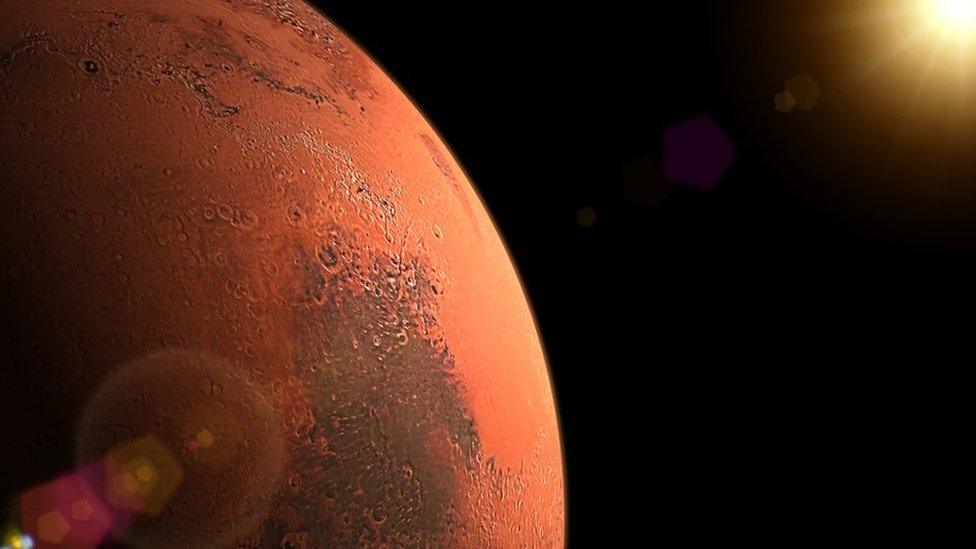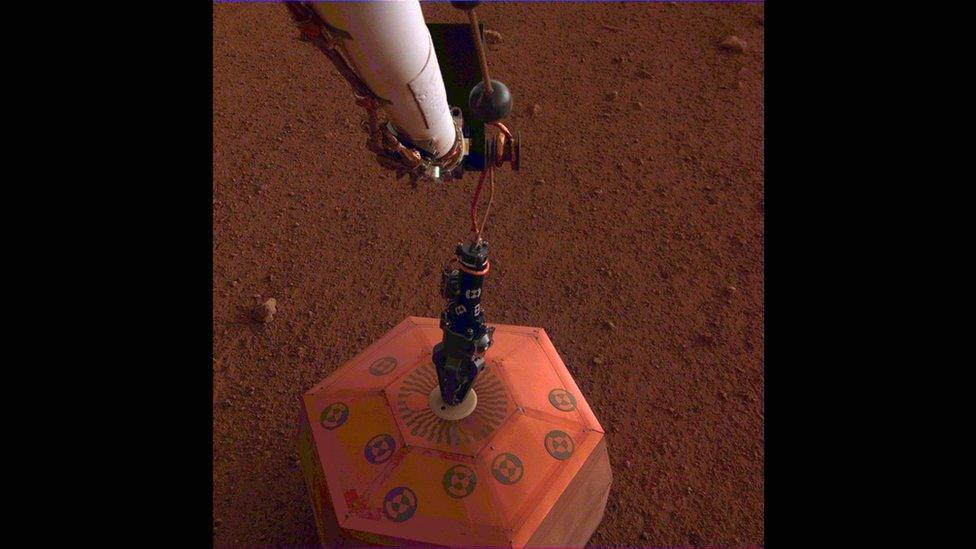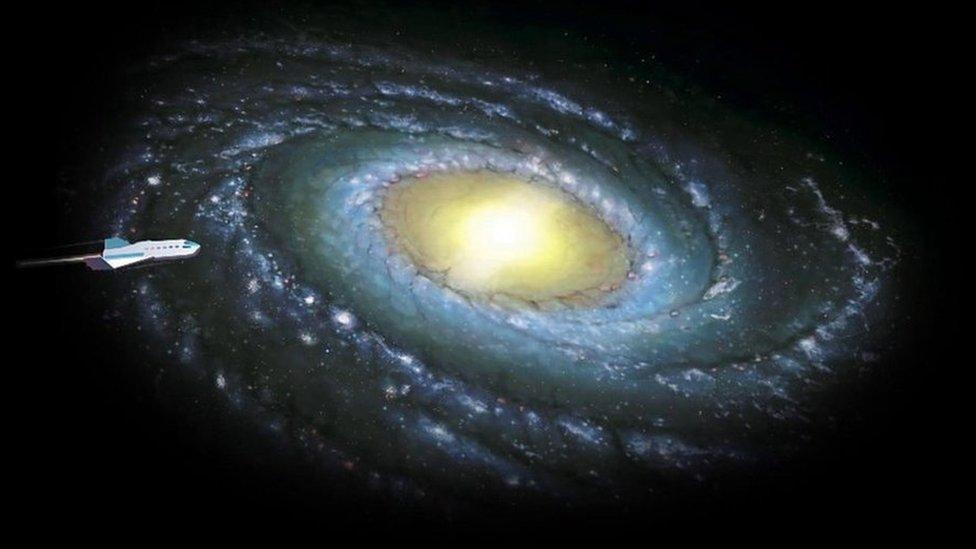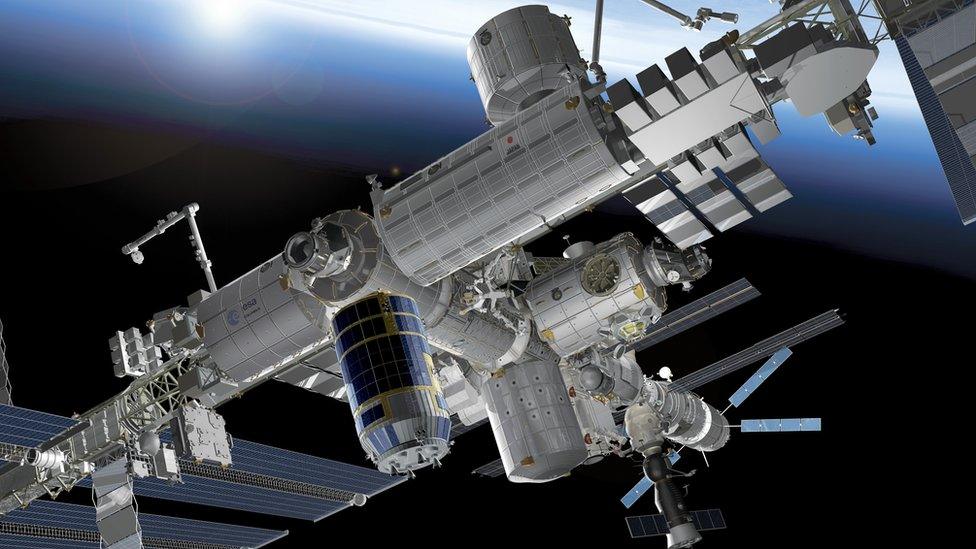Mysterious 'marsquakes' detected on the Red Planet
- Published
- comments

Nasa scientists have detected some mysterious rumblings coming from Mars.
They were picked up by the InSight lander, which began its mission on the Red Planet in November 2018.
It is not the first time tremors have been felt, the probe has recorded over 500 quakes so far, but the latest were strong and clear.
These marsquakes had magnitudes of 3.3 and 3.1 and were detected in a location of Mars called Cerberus Fossae.
WATCH: What is the Nasa InSight probe doing on Mars?
Earlier in the mission, two other quakes, with a magnitude 3.6 and 3.5, were detected in the same spot, almost a full Martian year (two Earth years) ago.
They happened in the Martian northern summer, when the planet's winds die down, exactly when Nasa predicted they might.
This has got scientists excited because during the past northern winter season, InSight couldn't detect any quakes at all.
"It's wonderful to once again observe marsquakes after a long period of recording wind noise," said John Clinton, a seismologist who leads InSight's Marsquake Service at ETH Zurich.
"One Martian year on, we are now much faster at characterising seismic activity on the Red Planet."
The InSight rover is what is called a stationary lander. This means it sits still on the surface of the Red Planet to carry out its studies, unlike the Mars rover which roams across the surface.
The name of the shuttle InSight stands for Interior Exploration using Seismic Investigations, Geodesy and Heat Transport.

The sensors were developed in France and the UK
Why are scientists studying marsquakes?
Nasa hope that by studying marsquakes, they will be able to have a better understanding of Mars' mantle and core.
They hope this will tell them more about how rocky planets are formed, which could give scientists more information about which ones may be able to support life.
What is causing the rumbles?
The planet does not have tectonic plates like Earth, but it does have volcanically active regions that can cause rumbles.
Nasa say that the large quakes support their theory that the Cerberus Fossae region of Mars is a centre of seismic activity.
Taichi Kawamura from France's Institut de Physique du Globe de Paris, which helped provide InSight's seismometer said: "Over the course of the mission, we've seen two different types of marsquakes: one that is more 'Moon-like' and the other, more 'Earth-like.
"Earthquake waves travel more directly through the planet, while those of moonquakes tend to be very scattered; marsquakes fall somewhere in between.
"Interestingly, all four of these larger quakes, which come from Cerberus Fossae, are 'Earth-like.'"
- Published7 March 2018

- Published16 February 2021

- Published20 November 2018

